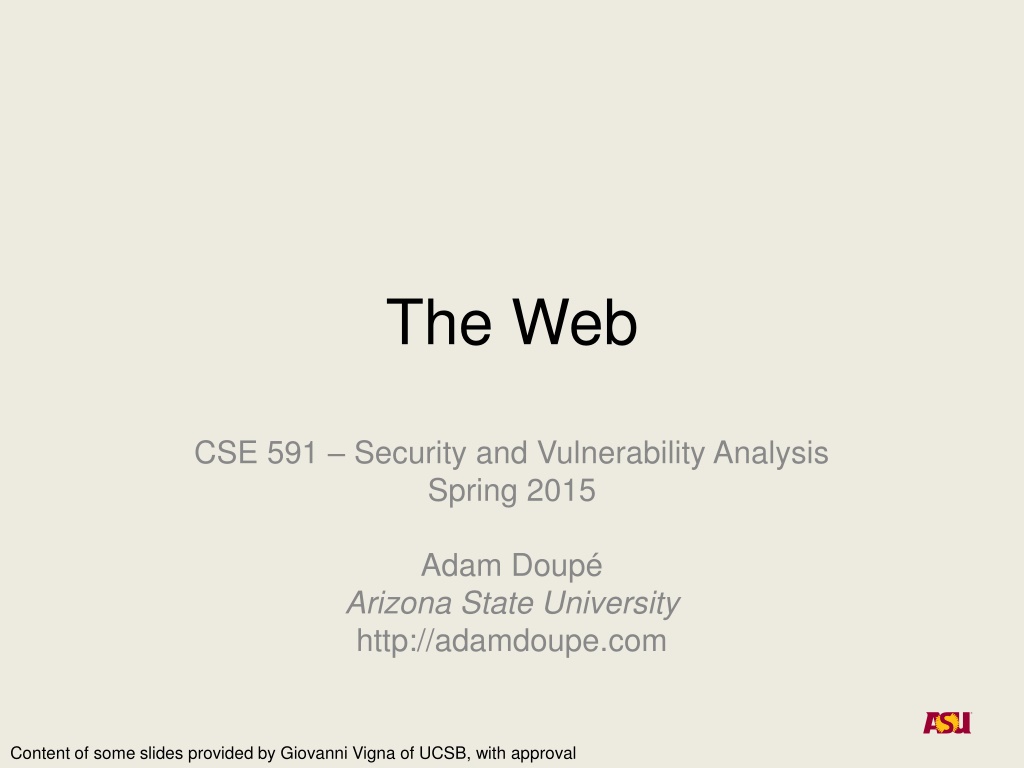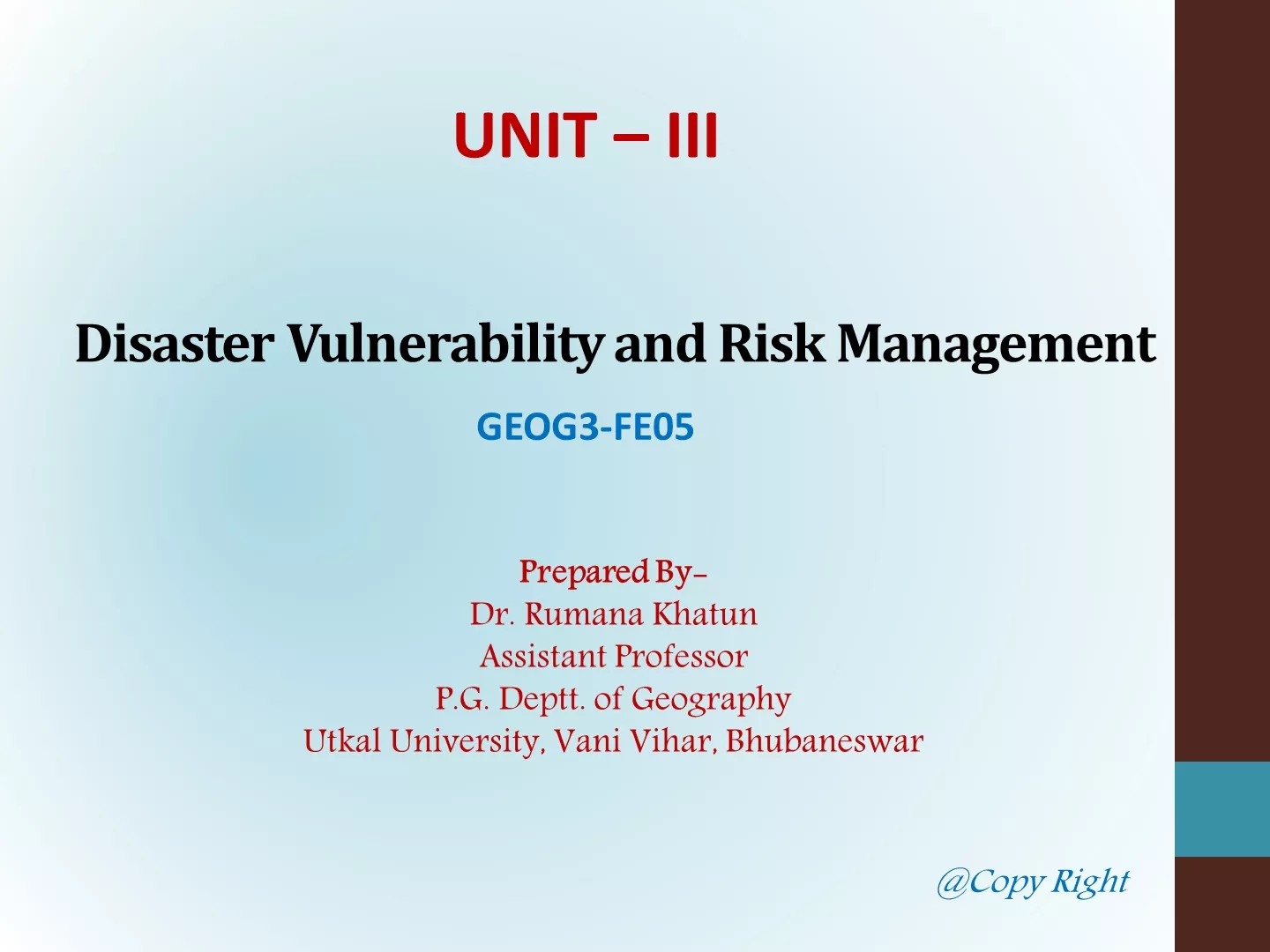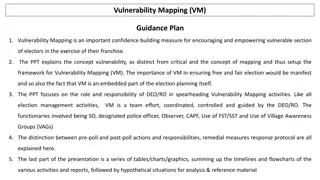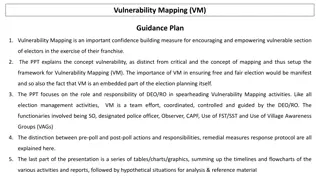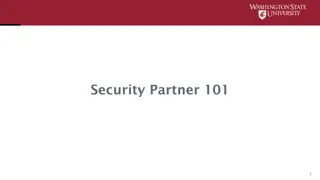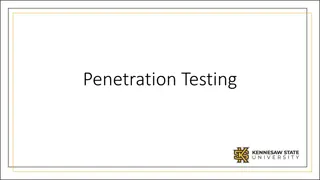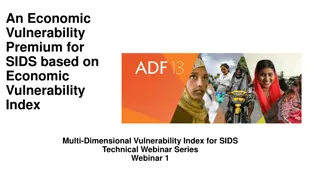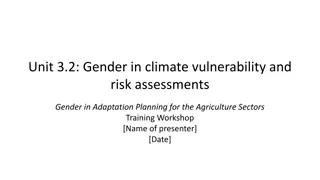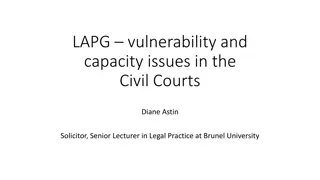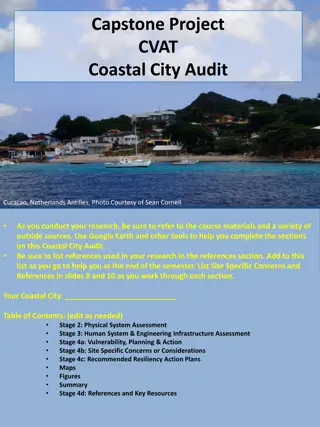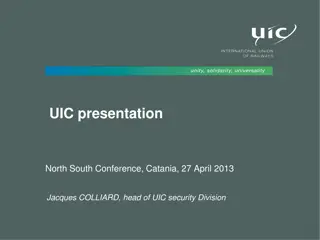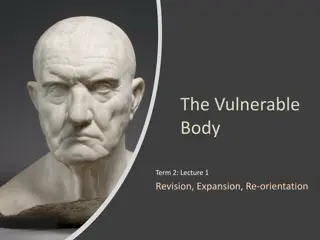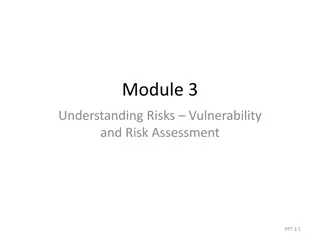Security and Vulnerability Analysis at ASU
Explore the birth and evolution of the World Wide Web, delving into its design, central questions, and key technologies like HTML, URI, and HTTP. Discover the essential aspects of Uniform Resource Identifier (URI) and its significance in accessing resources online.
Uploaded on Feb 22, 2025 | 0 Views
Download Presentation

Please find below an Image/Link to download the presentation.
The content on the website is provided AS IS for your information and personal use only. It may not be sold, licensed, or shared on other websites without obtaining consent from the author.If you encounter any issues during the download, it is possible that the publisher has removed the file from their server.
You are allowed to download the files provided on this website for personal or commercial use, subject to the condition that they are used lawfully. All files are the property of their respective owners.
The content on the website is provided AS IS for your information and personal use only. It may not be sold, licensed, or shared on other websites without obtaining consent from the author.
E N D
Presentation Transcript
The Web CSE 591 Security and Vulnerability Analysis Spring 2015 Adam Doup Arizona State University http://adamdoupe.com Content of some slides provided by Giovanni Vigna of UCSB, with approval
Sir Tim Berners-Lee Adam Doup , Security and Vulnerability Analysis
Birth of the Web Created by Tim Berners-Lee while he was working at CERN First CERN proposal in 1989 Finished first website end of 1990 Weaving the Web: The Original Design and Ultimate Destiny of the World Wide Web, Tim Berners-Lee Adam Doup , Security and Vulnerability Analysis
Design Originally envisioned as a way to share research results and information at CERN Combined multiple emerging technologies Hypertext Internet (TCP/IP) Idea grew into universal access to a large universe of documents Adam Doup , Security and Vulnerability Analysis
Three Central Questions How to name a resource? How to request and serve a resource? How to create hypertext? Adam Doup , Security and Vulnerability Analysis
Three Central Technologies How to name a resource? Uniform Resource Identifier (URI/URL) How to request and serve a resource? Hypertext Transfer Protocol (HTTP) How to create hypertext? Hypertext Markup Language (HTML) Adam Doup , Security and Vulnerability Analysis
HTML URI HTTP Adam Doup , Security and Vulnerability Analysis
Uniform Resource Identifier Essential meta-data to reach/find a resource Answers the following questions: Which server has it? How do I ask? How can the server locate the resource? Latest definition in RFC 3986 (January 2005) Adam Doup , Security and Vulnerability Analysis
URI Syntax <scheme>:<authority>/<path>?<query>#<fragment> Adam Doup , Security and Vulnerability Analysis
URI Syntax <scheme>:<authority>/<path>?<query>#<fragment> scheme The protocol to use to request the resource authority The entity that controls the interpretation of the rest of the URI Usually a server name <username>@<host>:<port> path Usually a hierarchical pathname composed of / separated strings query Used to pass non-hierarchical data fragment Used to identify a subsection or subresource of the resource Adam Doup , Security and Vulnerability Analysis
URI Syntax <scheme>:<authority>/<path>?<query>#<fragment> Examples: foo://example.com:8042/over/there?test=bar#nose ftp://ftp.ietf.org/rfc/rfc1808.txt mailto:doupe@asu.edu https://example.com/test/example:1.html?/adam Adam Doup , Security and Vulnerability Analysis
URI Reserved Characters : / ? # [ ] @ ! $ & ( ) * + , ; = Adam Doup , Security and Vulnerability Analysis
URI Percent Encoding Must be used to encode anything that is not of the following: Alpha [a-zA-Z] Digit [0-9] - . _ ~ Adam Doup , Security and Vulnerability Analysis
URI Percent Encoding Encode a byte outside the range with percent sign (%) followed by hexadecimal representation of byte & -> %26 % -> %25 <space> -> %20 Let s fix our previous example: https://example.com/test/example:1.html?/ad am https://example.com/test/example%3A1.html?% 2Fadam Adam Doup , Security and Vulnerability Analysis
URI Absolute vs. Relative URI can specify the absolute location of the resource https://example.com/test/help.html Or the URI can specify a location relative to the current resource //example.com/example/demo.html Relative to the current network-path (scheme) /test/help.html Relative to the current authority ../../people.html Relative to the current authority and path Context important in all cases http://localhost:8080/test Adam Doup , Security and Vulnerability Analysis
Hypertext Transport Protocol Protocol for how a web client can request a resource from a web server Based on TCP, uses port 80 by default Version 1.0 Defined in RFC 1945 (May 1996) Version 1.1 Defined in RFC 2616 (June 1999) Version 2.0 Based on SPDY, still under discussion Adam Doup , Security and Vulnerability Analysis
HTTP Important Terms user agent The client which initiates the request server A program which accepts HTTP requests and sends HTTP responses proxy An intermediary which acts as both a server and client for the purpose of making requests on behalf of other clients Adam Doup , Security and Vulnerability Analysis
HTTP Overview Client Opens TCP connection to the server Sends request to the server Server Listens for incoming TCP connections Reads request Sends response Adam Doup , Security and Vulnerability Analysis
HTTP Overview HTTP Request HTTP Response Server Client Adam Doup , Security and Vulnerability Analysis
HTTP Overview Cache Server Client Cache Firewall Proxy Adam Doup , Security and Vulnerability Analysis
Requests An HTTP request consists of: method resource (derived from the URI) protocol version client information body (optional) Adam Doup , Security and Vulnerability Analysis
Requests Syntax Start line, followed by headers, followed by body Each line separated by CRLF Headers separated by body via empty line (just CRLF) Adam Doup , Security and Vulnerability Analysis
Requests Methods The method that that client wants applied to the resource Common methods GET Request transfer of the entity referred to by the URI POST Ask the server to process the included body as data associated with the resource identified by the URI PUT Request that the enclosed entity be stored under the supplied URI HEAD Identical to GET except server must not return a body Adam Doup , Security and Vulnerability Analysis
Requests Methods OPTIONS Request information about the communication options available on the request/response chain identified by the URL DELETE Request that the server delete the resource identified by the URI TRACE used to invoke a remote, application- layer loop-back of the request message and the server should reflect the message received back to the client as the body of the response CONNECT used with proxies A webserver can define arbitrary extension methods Adam Doup , Security and Vulnerability Analysis
Requests Example GET / HTTP/1.1 User-Agent: curl/7.37.1 Host: www.google.com Accept: */* Adam Doup , Security and Vulnerability Analysis
Host Header and HTTP/1.1 In HTTP 1.0, it is not possible to discern, from the request line, which server was intended to process the request: GET / HTTP/1.0 Thus, it is not possible to associate multiple server names to the same IP address What would happen if every server name had to have its own IP address? In HTTP 1.1, the Host header is required, and it specifies which server name is the intended recipient GET / HTTP/1.1 Host: example.com Adam Doup , Security and Vulnerability Analysis
Modern Requests GET / HTTP/1.1 Host: www.google.com Accept-Encoding: deflate, gzip Accept: text/html,application/xhtml+xml,applic ation/xml;q=0.9,image/webp,*/*;q=0.8 User-Agent: Mozilla/5.0 (Macintosh; Intel Mac OS X 10_10_1) AppleWebKit/537.36 (KHTML, like Gecko) Chrome/39.0.2171.95 Safari/537.36 Adam Doup , Security and Vulnerability Analysis
Responses An HTTP response consists of: protocol version status code short reason headers body Adam Doup , Security and Vulnerability Analysis
Responses Syntax Status line, followed by headers, followed by body Each line separated by CRLF Headers separated by body via empty line (just CRLF) Almost the same overall structure as request Adam Doup , Security and Vulnerability Analysis
Responses Status Codes 1XX Informational: request received, continuing to process 2XX Successful: request received, understood, and accepted 3XX Redirection: user agent needs to take further action to fulfill the request 4XX Client error: request cannot be fulfilled or error in request 5XX Server error: the server is aware that it has erred or is incapable of performing the request Adam Doup , Security and Vulnerability Analysis
Responses Status Codes "200" ; OK "201" ; Created "202" ; Accepted "204" ; No Content 301" ; Moved Permanently "307" ; Temporary Redirect Adam Doup , Security and Vulnerability Analysis
Responses Status Codes "400" ; Bad Request "401" ; Unauthorized "403" ; Forbidden "404" ; Not Found "500" ; Internal Server Error "501" ; Not Implemented "502" ; Bad Gateway "503" ; Service Unavailable Adam Doup , Security and Vulnerability Analysis
Requests Example GET / HTTP/1.1 User-Agent: curl/7.37.1 Host: www.google.com Accept: */* Adam Doup , Security and Vulnerability Analysis
Responses Example HTTP/1.1 200 OK Date: Tue, 13 Jan 2015 03:57:26 GMT Expires: -1 Cache-Control: private, max-age=0 Content-Type: text/html; charset=ISO-8859-1 Set-Cookie: Server: gws X-XSS-Protection: 1; mode=block X-Frame-Options: SAMEORIGIN Alternate-Protocol: 80:quic,p=0.02 Accept-Ranges: none Vary: Accept-Encoding Transfer-Encoding: chunked <!doctype html><html itemscope="" itemtype="http://schema.org/WebPage" lang="en"><head><meta content="Search the world's information, including webpages, images, videos and more. Go Adam Doup , Security and Vulnerability Analysis
HTTP Authentication Based on a simple challenge-response scheme The challenge is returned by the server as part of a 401 (unauthorized) reply message and specifies the authentication schema to be used An authentication request refers to a realm, that is, a set of resources on the server The client must include an Authorization header field with the required (valid) credentials Adam Doup , Security and Vulnerability Analysis
HTTP Basic Authentication The server replies to an unauthorized request with a 401 message containing the header field WWW-Authenticate: Basic realm="ReservedDocs" The client retries the access including in the header a field containing a cookie composed of base64 encoded (RFC 2045) username and password Authorization: Basic QWxhZGRpbjpvcGVuIHNlc2FtZQ== Can you crack the username/password? Adam Doup , Security and Vulnerability Analysis
HTTP 1.1 Authentication Defines an additional authentication scheme based on cryptographic digests (RFC 2617) Server sends a nonce as challenge Client sends request with digest of the username, the password, the given nonce value, the HTTP method, and the requested URL To authenticate the users the web server has to have access to clear-text user passwords Adam Doup , Security and Vulnerability Analysis
Monitoring and Modifying HTTP Traffic HTTP traffic can be analyzed in different ways Sniffers can be used to collect traffic Servers can be configured to create extensive logs Browsers can be used to analyze the content received from a server Client-side/server-side proxies can be used to analyze the traffic without having to modify the target environment Client-side proxies are especially effective in performing vulnerability analysis because they allow one to examine and modify each request and reply Firefox extensions: LiveHTTPHeaders, Tamper Data Burp Proxy This is a professional-grade tool that I use Adam Doup , Security and Vulnerability Analysis
Hypertext Markup Language A simple data format used to create hypertext documents that are portable from one platform to another Based on Standard Generalized Markup Language (SGML) (ISO 8879:1986) HTML 2.0 Proposed in RFC 1866 (November 1995) HTML 3.2 Proposed as World Wide Web Consortium (W3C) recommendation (January 1997) HTML 4.01 Proposed as W3C recommendation (December 1999) XHTML 1.0 Attempt by W3C to reformulate HTML into Extensible Markup Language (XML) (January 2000) HTML 5.0 Proposed as W3C recommendation (October 2014) HTML 5.1 Under development Adam Doup , Security and Vulnerability Analysis
HTML Overview Basic idea is to markup document with tags, which add meaning to raw text Start tag: <foo> Followed by text End tag: </foo> Self-closing tag: <bar /> Void tags (have no end tag): <img> Adam Doup , Security and Vulnerability Analysis
HTML Tags Tag are hierarchical Adam Doup , Security and Vulnerability Analysis
HTML Tags <html> <head> <title>Example</title> </head> <body> <p>I am the example text</p> </body> </html> Adam Doup , Security and Vulnerability Analysis
HTML Tags <html> <head> <title> Example <body> <p> I am the example text Adam Doup , Security and Vulnerability Analysis
HTML Tags Tags can have attributes that provide metadata about the tag Attributes live inside the start tag after the tag name Four different syntax <foo bar> foo is the tag name and bar is an attribute <foo bar=baz> The attribute bar has the value baz <foo bar='baz'> <foo bar="baz"> Multiple attributes are separated by spaces <foo bar='baz' disabled required="true"> Adam Doup , Security and Vulnerability Analysis
HTML Hyperlink anchor tag is used to create a hyperlink href attribute is used provide the URI Text inside the anchor tag is the text of the hyperlink <a href="http://google.com">Example</a> Adam Doup , Security and Vulnerability Analysis
HTML Basic HTML 5 Page <!DOCTYPE html> <html> <head> <meta charset="UTF-8"> <title>CSE 591</title> </head> <body> <a href="http://example.com/">Text</a> </body> </html> Adam Doup , Security and Vulnerability Analysis
HTML Browsers User agent is responsible for parsing and interpreting the HTML and displaying it to the user Adam Doup , Security and Vulnerability Analysis
HTML Parsed HTML 5 Page Adam Doup , Security and Vulnerability Analysis
